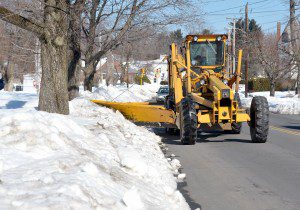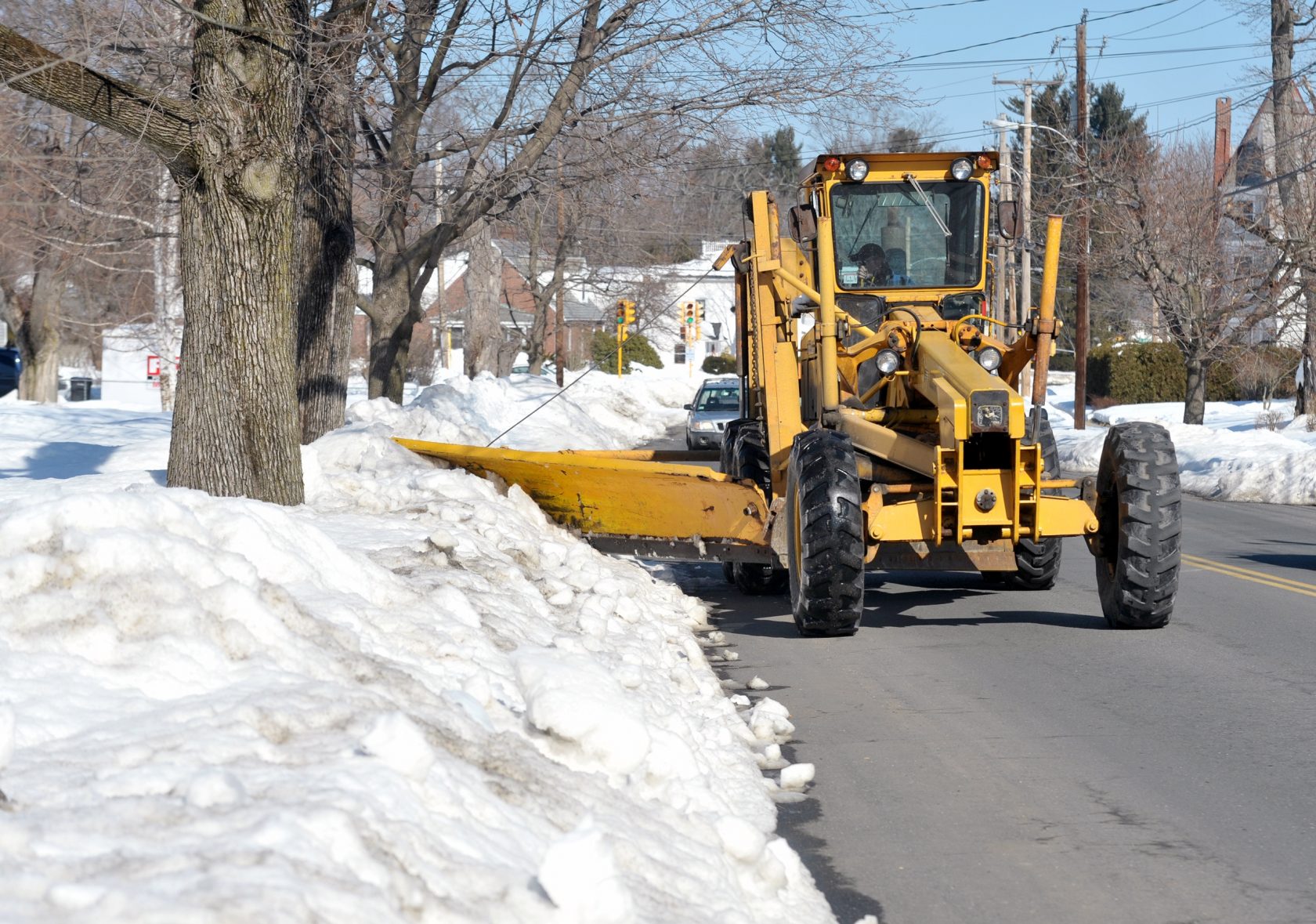
A Westfield Department of Public Works employee uses a special snow blade to push back the snow piles along the edge of the roadways after snowstorm Nemo. (File photo by chief photographer Frederick Gore)
WESTFIELD – City officials are keeping an eye on the weather, waiting for the next appreciable snowfall as clean up from Nemo continues this week.
Mayor Daniel M. Knapik said that the post storm clean up includes removing snow banks in the city’s core shopping district and from off-street parking lots. The initial snow removal work began last Tuesday and continued for much of the week, but could resume this week if a new system, now bringing rain in the south, arrives this weekend.
Public Works Superintendent Jim Mulvenna is hoping that any precipitation moving into the area comes in the form of rain.
“Nemo was a pretty expensive one,” Mulvenna said. “We started the year with a $400,000 snow budget, but that is pretty much gone.”
Knapik said that Nemo dumped the second deepest snowfall on the city, recorded at 23 inches by the National Weather Service, since 1905.
“It was the duration of this storm, as well as the severity, with whiteout conditions at times,” Knapik said. “It was dangerous for operators in those conditions. City crews started at 7 a.m. Friday and worked 23 hours.”
Mulvenna said that all 16 heavy DPW trucks were plowing and sanding, while 64 private contractors has trucks on the roads.
“Snow removal is not something new to us in New England, so we procure plow vendors every fall,” Knapik said. “But it is becoming more difficult to get contractors with heavy equipment because the city does have a substantial insurance requirement (as part of the contracts), so there are fewer vendors willing or able to pay that.
Mulvenna said that the unpredictable nature of New England winters is part of the problem in securing contractors, especially those with heavy trucks.
“Some winters they make a fortune, some winters they lose money just making the insurance premiums,” he said.
Knapik said that the city is also more selective in hiring contractors.
“We don’t want the small pickup trucks, the smallest we want are one-ton trucks, which are fine when you have a five or six inch storm, but not in something like this last one,” Knapik said.
Mulvenna said that contractors are typically called in when the snowfall is between three and four inches.
“The priority for city trucks is clearing the main roads and the hilly roads in residential areas of the city, pre-treating roads with sand and salt,” Mulvenna said. “We assign the contractors to the same neighborhoods, people who have been doing those roads for years. The problem with the one-ton trucks is that they were getting stuck all over the city, so I have to send equipment out to get them free of the snow.”
Knapik said that city and private contractors were sent home Saturday after the snow stopped for a rest cycle because many had worked for more than 24 hours and were not called back to duty until Sunday, when clearing operations resumed.
“The weather cooperated with us Sunday and Monday when the priority was pushing back snow banks because it was warm and the snow didn’t freeze like it is now,” Mulvenna said. “We were also lucky that it was a Friday storm and people weren’t trying to get to work or school the next morning. We had the weekend to get roads cleared. We had a few contractors on duty Saturday night so they could be dispatched by the police to deal with problems caused by drifting snow.”






